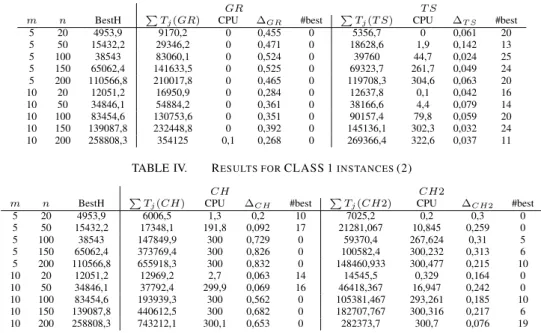Tabu search algorithms to minimize the total tardiness in a flow shop production and outbound distribution scheduling problem
Texte intégral
Figure

![Tabu search (TS) has been initially proposed by Glover [9], [10]. TS is a metaheuristic local search algorithm that begins with an initial solution and successively moves to the best solution in the neighborhood of the current solution](https://thumb-eu.123doks.com/thumbv2/123doknet/14424990.514019/5.892.473.846.138.323/initially-proposed-metaheuristic-algorithm-solution-successively-solution-neighborhood.webp)


Documents relatifs
Solving to optimality large size combinatorial optimization problems (COPs) 2 using a Branch and Bound algorithm (B&B) is CPU time-consuming.. Although B&B allows to
Chapter 3 further extended the JS with a model called exible generalized blocking job shop (FGBJS), which adds to the JS four practical features namely processor
Dominance rules for the parallel machine total weighted tardiness scheduling problem with release dates.. Antoine Jouglet,
We then add (columns 5 and 6) the dominance and propagation rules presented in Section 2.1.4 (EQual Pro- cessing time, EQP), Section 2.2 (Dominance rules relying on Scheduled Jobs,
It takes as input a problem, the variable heuristic, value heuristic, best solution found thus far, the maximum objective value allowed, and a time limit (t2 for dichotomic
disjunctive precedence (being able to be realized by the same resource). We cannot obtain an infeasible solution since we respect the precedence and disjunctive constraints. - In
A multi-start Dynasearch algorithm for the time dependent single- machine total weighted tardiness scheduling problem... single-mahine total weighted tardiness
Tabu search algorithms to minimize the total tardiness in a flow shop production and outbound distribution scheduling problem. In Proceedings of the International Conference